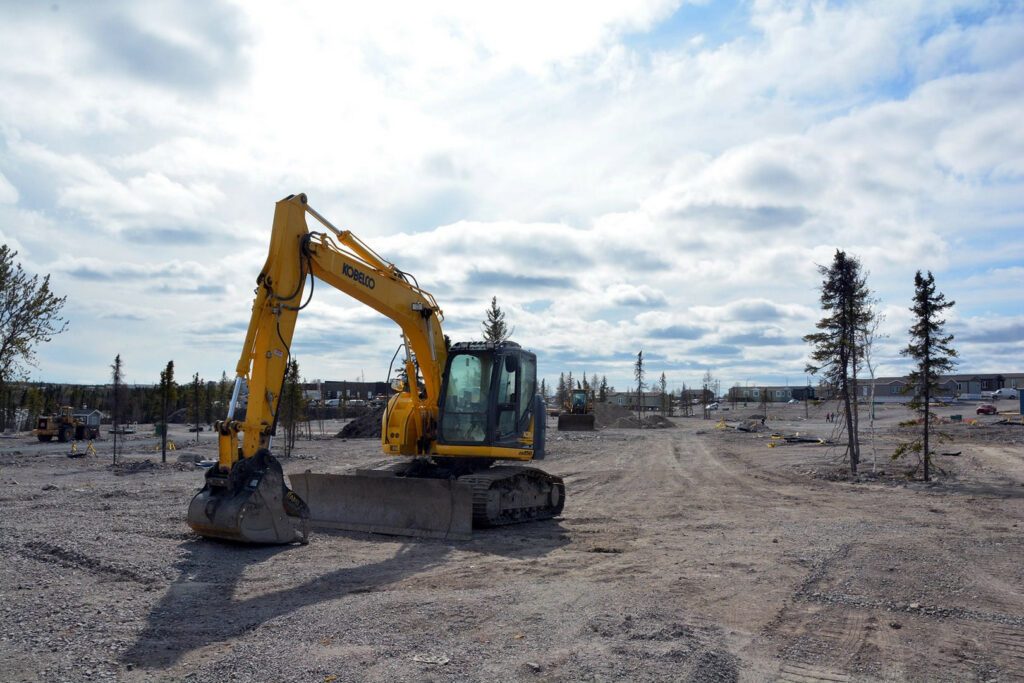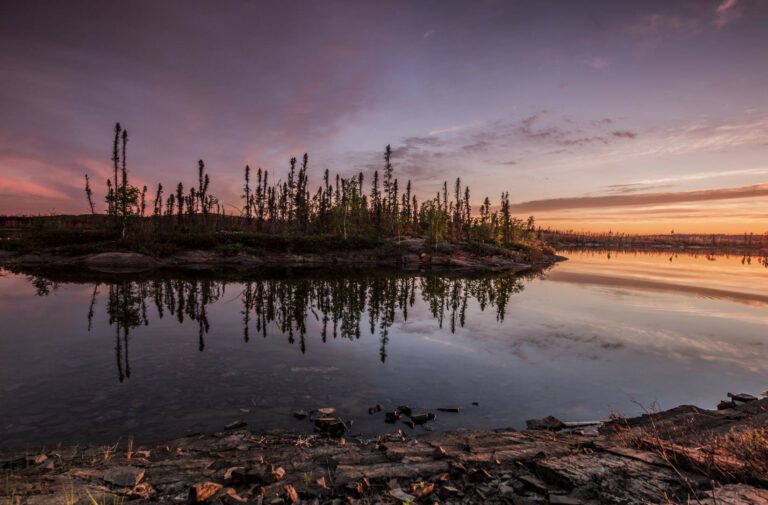In a bombshell vote last night, City Council refused to allow the development of a large temporary camp in Kam Lake meant to house workers building the new Stanton Hospital. The plan, officially presented to council only hours before by the hospital’s general contractors, had been to build temporary dwellings for between 150 and 250 people in a large sand and gravel lot next to Yellowknife’s correctional centre and the new Hall Crescent residential development.
How this affects the P3 mega-project remains to be seen. Earlier that day, Dave Brothers, vice president of Northern Operations at Clark Builders (the hospital’s general contractor, along with Bird Construction) had warned Council that “the [hospital] project would be devastated” if they voted down the work camp proposal.
“We could not build it in the time that’s required to build it in, which is three years,” Brothers told Council during their noon Municipal Service Committee meeting yesterday. “If we go over that, the project is really in big trouble.”
When news of the proposal broke last Friday, many people, from neighbourhood residents to city councillors, said they were caught by surprise, and the prospect of a large temporary development near a new family-oriented neighbourhood struck an immediately controversial chord. That said, council’s choice to axe the project at first reading — without any formal discussion, and weeks before the public hearing— is both unexpected and extraordinary. Only seven councillors were present, with Couns. Steve Payne, Linda Bussey and Rebecca Alty voting in favour and Couns. Shauna Morgan, Julian Morse, Adrian Bell and Rommel Silverio voting against it.
Why the hate?
Although shutting the vote down was swift — perhaps imprudently so — there were rumblings at the MSC meeting which had already suggested it wouldn’t be smooth sailing for the mega-project’s developers. A petition with 83 signatures collected in a single day from residents in Hall Crescent was presented to council.
“There’s not one person I talked to in our neighbourhood who thought that was remotely a good idea,” said Aaron Reid, a resident who collected the petition. The neighbourhood, he continued, “is predominantly young children, families with young children, new families… this would be a terrible, terrible thing to put a temporary work camp with up to 250 people right next to us.”
Further grumblings came from Les Rocher, the longtime Yellowknife developer behind Hall Crescent, who minced exactly zero words after the MSC meeting: “I didn’t develop something to have somebody come over there that’s unorganized to destroy my fucking development…. We have a $70 million tax base there for the City, then in the middle of this they’re going to throw in a fucking construction camp,” he said incredulously. “How would you like it?”
Only about half of the Hall Crescent houses have been already sold, which may explain Rocher’s anger — family homes next to a work camps are likely to be a hard sell.
The biggest indication that the plan was set to flounder was a forceful rebuke from Coun. Bell, who argued this kind of work camp will set a bad precedent for Yellowknife, which only broke away from its long tradition as a hub for outlying work camps in the last 20 years.
“I can’t think of any possible way to minimize the potential economic spin-off and benefits to our community than by approving a temporary work camp,” said Bell. “Residents will not be close to our restaurants, they will not be close to our retailers, it’s almost a flyover type of situation.
“In many ways Yellowknife has been subject to boom-and-bust cycles and we lament this fact,” Bell continued. “We’re now a capital city, we’ve got a full-time slate of industries and we aim to diversify and be a more stable economy… I’d be afraid if we go down this road with this developer, I think work camps would be a very popular option for any future development.”
What now for the Stanton build?
With the entire housing plan for workers — which was months in the making, according to Brothers — evaporating into thin air, spectres of other P3 delays, like the Deh Cho bridge, loom. Things, however, may not be as “devastated” for the Clark and Bird building duo as their preemptive (and unsuccessful) rhetoric suggests.
In justifying the work camp, Brothers claimed that there’s simply not enough accommodation in Yellowknife for a project of this size: “We’ve gone to all the companies that have apartments in town… and they’ve said they can’t give us the blocks of apartments that we need… We’ve gone to the hotels — with the tourism here, we could get some of the hotels now, but come the winter when the aurora starts we’ll get kicked out of the hotels. We cannot operate and build a building based on temporary occupancy.”
However, numbers from the Yellowknife Hotel Association suggest things may not be as bad as Brothers suggests.
Throughout most of the year, according to statistics supplied to EDGE by Jenni Bruce, president of the Hotel Association, there are over 150 rooms, each capable of housing two to four people, “each in their own bed,” available in Yellowknife hotels. There are, of course, the peak occupancy aurora tourism months in late winter/early spring. But the document from the Hotel Association argues that even in the “compression months” — September, February and March — “based on historical statistics there would be enough rooms to house a lighter work crew in what we anticipate is a low construction season.”
It adds “there will also be anywhere from 140-200 additional hotel rooms entering the Yellowknife market in 2016 as early as July or August.”
It may be in the Hotel Association’s best interests to play up the availability of their members’ rooms, so the occupancy optimism should be taken with a grain of salt. However, if these numbers are anywhere close to true, then Brothers’ argument that a work camp was necessary, becomes, perhaps, more of an issue of the work camp being more convenient and light on the consortium’s pocketbooks.
Remember, in a P3 project, costs associated with the construction such as housing workers are the responsibility of the developer, not the GNWT. The whole idea behind a P3 is that the developer assumes financial risks associated with project delays, as well as any benefits that are built into the contract to incentivize a timely completion. Perhaps it’s little wonder then, that the contractors were pushing for temporary housing, which would have surely been a cheaper option than hotels, on an expedited timeline. Either way, it’s the contractor that will take any financial hit associated with last night’s decision, not the GNWT.
If, in the end, it turns out that there is ample accommodation, then last night’s vote may be remembered as a moment when City Council called a developer’s bluff, both on behalf of their perturbed constituents, and for the sake of smart growth. If there truly isn’t enough accommodation, then the council’s decision may very well have thrown a stumbling block in front of the NWT’s biggest P3 mega-project so far. Either way, this was a big move, made fast. And whatever happens next, it will cost somebody a lot of money.






